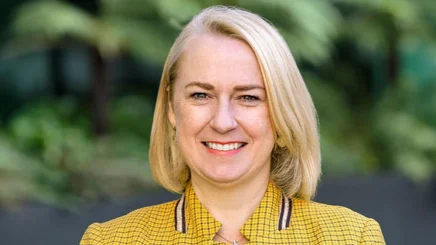To manage these pressures, Air New Zealand focused on cost control measures such as renegotiating supplier contracts and prioritizing investments. The company’s Kia Mau transformation initiatives delivered around $100 million in benefits through improved ancillary revenue streams and operational efficiencies like digital self-service tools and better on-time performance.
Chair Dame Therese Walsh commented on the results: "This is a solid result in a year where the airline faced real operational and economic pressure. It speaks to the capability of the team, the robustness of the business, and the financial discipline that Greg has instilled during his time as CEO. While near-term challenges remain, our balance sheet is strong, and our strategy is clear.
"Based on the result announced today, and reflecting that confidence, the Board has declared a final unimputed ordinary dividend of 1.25 cents per share, payable on 25 September 2025 to shareholders on record as at 12 September 2025. During the year, Air New Zealand was also pleased to return $38 million to shareholders through the share buyback programme announced in February," said Dame Therese.
Dame Therese also acknowledged outgoing Chief Executive Officer Greg Foran: "Greg has led the business through an extraordinary period. He's been clear, considered, and focussed, and leaves Air New Zealand in a position of real strength. On behalf of the Board, I want to thank him for his leadership."
Greg Foran stated that managing engine-related disruptions required up to six narrowbody and five widebody aircraft being out of service at times during 2025. He noted that while Air New Zealand received $129 million in compensation from engine manufacturers for these issues, earnings before taxation could have been about $165 million higher if fleet operations had not been affected.
"We acted early and decisively, securing additional engines and aircraft, and optimising our schedule to keep customers moving. While this came at a significant cost, it was the right decision to deliver for our customers and maintain network stability," said Mr Foran.
The airline continues negotiations with Rolls-Royce and Pratt & Whitney regarding further compensation arrangements related to grounded aircraft.
Mr Foran added: "We are confident in the medium-term recovery path but note the next year will likely be every bit as constrained as the last. Unfortunately there are no quick fixes; navigating the next two years will require focus and discipline we've shown so far."
During 2025 Air New Zealand made progress including returning four retrofitted Boeing 787-9 Dreamliners into service; unveiling new uniforms; announcing plans for an international lounge at Auckland Airport; investing in infrastructure such as an upcoming engineering hangar; expanding its Christchurch Engine Centre; equipping around 3,000 staff with AI tools aimed at improving efficiency.
"These achievements show the airline's ability to execute against our plan while seizing opportunities for growth as scale returns," said Mr Foran.
Looking ahead into 2026—the airline expects ongoing groundings but sees signs that disruptions may ease within a year’s time:
"While we're not through it yet we are seeing early signs that most acute phase of disruption will be behind us within this coming year…we're approaching it with focus & discipline," said Mr Foran.
More than half its Boeing 787 fleet should feature modernized interiors by next year; delivery is expected soon for two new GE-powered Boeing 787s along with additional A321neo & ATR aircraft—to support increased capacity domestically & internationally during peak periods.
Mr Foran emphasized steps underway both restoring capacity & positioning for future needs:
"We know what needs happen lift financial performance…good progress already underway…and it will become increasingly evident as network scales back up & transformation work continues…While we aren't yet seeing signs recovery local economy—we remain confident demand will return—and we're well placed respond when does…the year ahead still have its challenges…system-wide aviation costs will be around $85m higher driven increased air navigation fees passenger levies landing charges…engine constraints also remain factor…but we've got right strategy strong balance sheet team delivers heart gives us real confidence what lies ahead," he said.
Due uncertainty over compensation discussions with engine makers plus recent increases sector levies—and subdued domestic demand—the company expects first-half pre-tax earnings for FY26 similar or less than second half FY25 ($34m). The outlook remains uncertain until these external factors improve.
 Alerts Sign-up
Alerts Sign-up





































